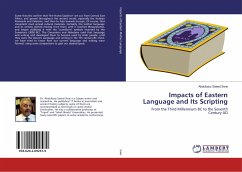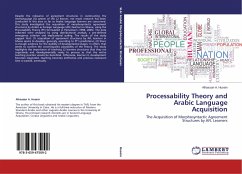
Impacts of Eastern Language and Its Scripting
From the Third Millennium BC to the Seventh Century AD
Versandkostenfrei!
Versandfertig in 6-10 Tagen
30,99 €
inkl. MwSt.

PAYBACK Punkte
15 °P sammeln!
Some theories confirm that "the Homo-Sapience" set out from Central East Africa, and spread throughout the ancient world, especially the Arabian Peninsula and Palestine, and then to Asia towards Europe. Of course, that movement must spread cultural materials. Certainly, the mother language and its writing started moving from there until it reached Mesopotamia, and began codifying it with the "cuneiform" symbols invented by the Sumerians (3000 BC). The Canaanites and Nabataea used that language and writing and developed them to become used by Arab people, until they were the Quran's Language an...
Some theories confirm that "the Homo-Sapience" set out from Central East Africa, and spread throughout the ancient world, especially the Arabian Peninsula and Palestine, and then to Asia towards Europe. Of course, that movement must spread cultural materials. Certainly, the mother language and its writing started moving from there until it reached Mesopotamia, and began codifying it with the "cuneiform" symbols invented by the Sumerians (3000 BC). The Canaanites and Nabataea used that language and writing and developed them to become used by Arab people, until they were the Quran's Language and writing in the 7th century BC. Here, we have tried to know how our current language and writing were formed, using some comparisons to gain our desired goals.












